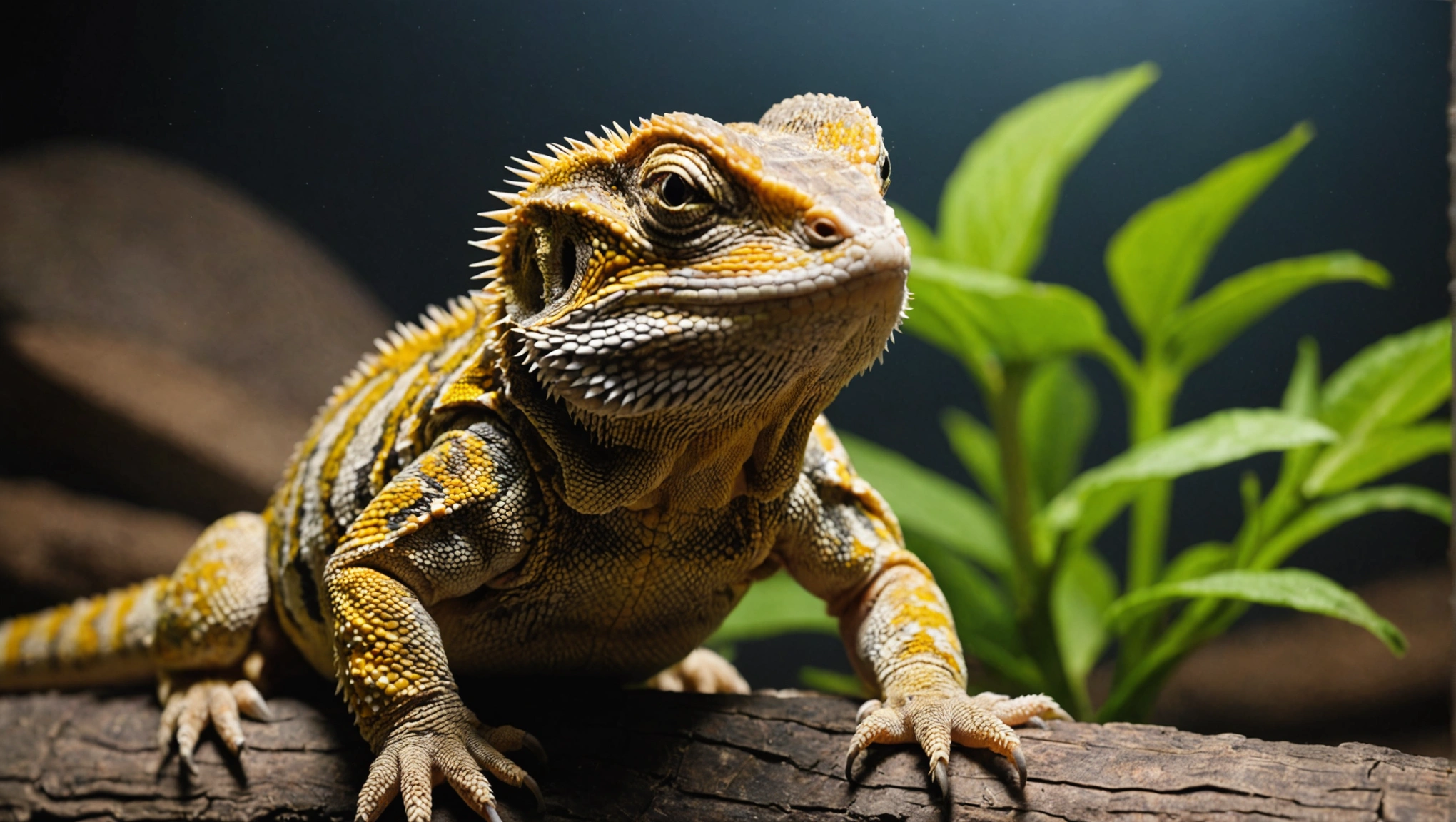Welcome to the fascinating world of reptile pets! In this guide, we will delve into the essential lighting needs for three popular reptile companions: Bearded Dragons, Turtles, and Chameleons. Proper lighting is crucial for the health and well-being of these unique creatures, as it not only aids in mimicking their natural habitats but also plays a significant role in their physiological processes. Understanding the specific lighting requirements for each species is key to creating a suitable environment that promotes their overall development and happiness. Whether you are a seasoned reptile enthusiast or considering bringing one of these captivating creatures into your home for the first time, this comprehensive exploration of lighting needs will provide you with valuable insights and practical tips to ensure that your reptile pets thrive under the right light.

Understanding UVB Lighting
What is UVB Light and its Role in Reptile Health
UVB light, short for ultraviolet B light, is a specific wavelength of ultraviolet light that plays a crucial role in the health of reptiles. In the wild, reptiles like bearded dragons, turtles, and chameleons rely on UVB light to stimulate the synthesis of Vitamin D3 in their skin. This synthesized Vitamin D3 is essential for proper calcium absorption, a process vital for maintaining strong bones and overall health in reptiles.
UVB Requirements for Bearded Dragons
Bearded dragons, native to arid regions, have evolved to bask in the sun to absorb UVB rays. In captivity, it is vital to replicate this natural behavior by providing the appropriate UVB Lighting sources. Bearded dragons require a UVB source that covers a significant portion of their enclosure, allowing them to bask and absorb UVB effectively. Additionally, ensuring a proper photoperiod, or light-dark cycle, is essential for maintaining their biological rhythms and overall well-being.
UVB Requirements for Turtles
Turtles, whether aquatic or semi-aquatic, also necessitate UVB light for their health. UVB exposure helps turtles metabolize calcium, preventing conditions like soft shell syndrome. When setting up a turtle enclosure, it is crucial to provide a UVB lamp that emits both UVB and UVA rays, as UVA light aids in appetite regulation and overall activity levels. Proper temperature gradients within the enclosure, achieved through basking spots with UVB heat lamps, are essential for thermoregulation and metabolic functions.
UVB Requirements for Chameleons
Chameleons, with their unique characteristics and arboreal lifestyles, require specialized UVB lighting in captivity. UVB light supports chameleons' calcium metabolism, preventing issues like metabolic bone disease. When selecting UVB fixtures for chameleons, it is important to consider the distance and intensity of the light to ensure they receive adequate UVB exposure. Additionally, providing a variety of basking spots at different heights within the enclosure allows chameleons to regulate their exposure to UVB effectively.
In summary, understanding the significance of UVB lighting is paramount for the proper care and longevity of reptiles such as bearded dragons, turtles, and chameleons. By meeting their specific UVB requirements and ensuring adequate exposure to this essential light source, reptile owners can promote the health and well-being of their scaly companions.
Types of Reptile Lights
When it comes to providing proper lighting for your reptile pets, it's essential to understand the different types of reptile lights available in the market. In this blog section, we will explore the three main types of reptile lights: UVB Bulbs, Basking Bulbs, Mercury Vapor Bulbs, and LED Lights.
UVB Bulbs vs. Basking Bulbs
- UVB Bulbs: These bulbs are essential for reptiles that require UVB light for synthesizing Vitamin D3 and maintaining proper calcium levels. UVB bulbs mimic natural sunlight and are crucial for reptiles' overall health.
- Basking Bulbs: On the other hand, basking bulbs provide heat and light for creating basking spots within the reptile enclosure. These bulbs help reptiles regulate their body temperature and behavior.
Mercury Vapor Bulbs for High UVB Output
- Mercury Vapor Bulbs: These bulbs are a popular choice for reptile owners looking to provide both UVA and UVB light in one source. They are known for their high UVB output, making them suitable for reptiles that require intense UV lighting. Additionally, mercury vapor bulbs are beneficial for reptiles that need exposure to UVA light for various physiological functions.
LED Lights for Energy Efficiency
- LED Lights: LED lights are becoming increasingly popular in reptile terrariums due to their energy efficiency and long lifespan. While they may not provide UVB or heat like other bulbs, LED lights are excellent for creating visual appeal within the enclosure and can be used in combination with other lighting sources. LED lights come in various colors and can be used to simulate natural lighting conditions or create a visually stimulating environment for both the reptiles and their owners.
When choosing the right type of reptile light for your pet, consider factors such as the species of your reptile, their natural habitat, and any specific lighting requirements. It's crucial to provide a proper photoperiod that mimics their natural light cycle to support their overall well-being. Remember to regularly monitor and replace bulbs according to the manufacturer's recommendations to ensure your reptile receives adequate lighting for their health and happiness. Investing in quality lighting is an essential aspect of responsible reptile care that should not be overlooked.
Setting up the lighting in your reptile enclosure is crucial for the health and well-being of your scaly companion. In this comprehensive guide, we will explore the essential steps to ensure your reptile's lighting setup is optimal for their specific needs.
Proper Placement of Lights in the Enclosure
When setting up lighting for your reptile enclosure, it is crucial to consider the proper placement of lights to cater to your reptile's species-specific requirements. For diurnal reptiles such as bearded dragons and iguanas, a full-spectrum UVB light source is indispensable for their overall health. Position the lights at an appropriate distance from the basking spot to provide adequate UVB exposure without causing any harm. Additionally, incorporating a basking lamp will establish a designated area where your reptile can effectively thermoregulate.
Creating Light and Heat Gradient Zones
Reptiles rely on light and heat to regulate their body temperature efficiently. By creating distinct light and heat gradient zones within the enclosure, you enable your pet to move between warmer and cooler areas as needed. The basking spot, typically the warmest area, should maintain temperatures between 85-95°F, catering to the needs of most reptiles. Gradually decreasing the temperature as you move away from the basking spot offers your pet options to adjust their body temperature accordingly.
Additional Considerations for an Optimal Lighting Setup
In addition to the primary lighting setup, consider incorporating timers to regulate the photoperiod for your reptile. Mimicking natural day-night cycles is crucial for their overall well-being and helps maintain their circadian rhythms. Regularly monitoring the temperature and UVB levels in the enclosure is essential to ensure they fall within the optimal range for your reptile's species.
Furthermore, providing hiding spots and foliage in the enclosure will allow your reptile to exhibit natural behaviors and feel secure in their environment. Remember to periodically assess and adjust your lighting setup based on your reptile's behavior and any changes in their health.
By following these guidelines and creating a well-thought-out lighting setup in your reptile enclosure, you can establish a comfortable and healthy environment that closely mimics their natural habitat, promoting their overall well-being and vitality.
Maintenance and Replacement
Importance of Monitoring UVB Output Regularly
Regularly monitoring the UVB output of reptile lights is crucial to ensure the health and well-being of your pet reptiles. UVB bulbs tend to lose their effectiveness over time, even if they still emit visible light. By using a UVB meter, you can accurately measure the UVB output and determine if the bulb needs to be replaced. This monitoring process is essential because inadequate UVB exposure can lead to serious health issues in reptiles, such as metabolic bone disease, weakened immune systems, and poor overall growth and development.
Signs of Poor UVB Output
It's important to be aware of the signs that indicate your reptile lights may need replacement. Some common signs include decreased appetite, lethargy, changes in skin color or texture, and reduced activity levels. If you notice any of these signs in your reptiles, it's crucial to check the UVB output of the bulbs promptly and replace them if necessary to prevent further health complications.
When to Replace Reptile Lights
Knowing when to replace your reptile lights is essential for maintaining a suitable environment for your reptiles. In general, UVB bulbs should be replaced every 6 to 12 months, even if they appear to be working. Over time, the UVB output of the bulbs diminishes, which can lead to various health issues for your reptiles, including metabolic bone disease. Keeping track of the age of your bulbs and replacing them in a timely manner will help ensure the optimal health of your reptiles.
Choosing the Right UVB Bulbs
When replacing reptile lights, it's crucial to select the appropriate UVB bulbs for your specific reptile species. Different reptiles have varying UVB requirements based on their natural habitat and behavior. Consult with a reptile specialist or veterinarian to determine the correct UVB strength and type of bulb needed for your pet reptiles. Using the right UVB bulbs will help mimic natural sunlight conditions and support your reptiles' overall health and well-being.
Proper maintenance and timely replacement of reptile lights are vital aspects of responsible reptile ownership. By monitoring UVB output regularly, recognizing signs of poor UVB exposure, and replacing bulbs as needed, you can create a safe and healthy environment for your beloved reptile companions.
Conclusion
Proper lighting is crucial for the health and well-being of reptile pets like Bearded Dragons, Turtles, and Chameleons. By understanding their specific lighting requirements and providing them with the appropriate UVB and heat sources, reptile owners can create a comfortable and thriving environment for their scaly companions. Remember, when it comes to reptile care, the right lighting can make all the difference in ensuring a happy and healthy life for these fascinating creatures.



